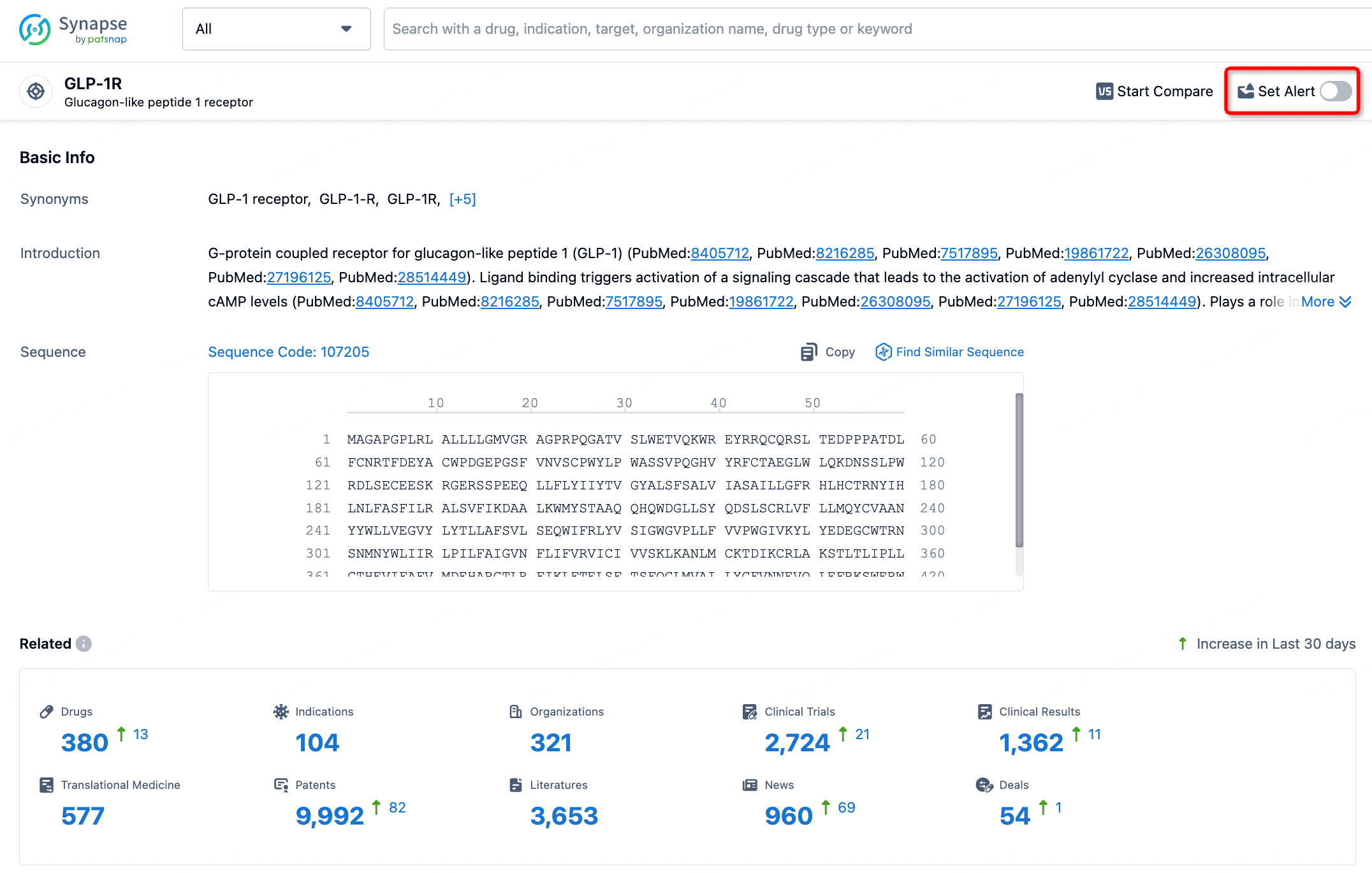Request Demo
What are SART3 modulators and how do they work?
26 June 2024
Introduction to SART3 Modulators
SART3 modulators are emerging as a significant area of interest in the field of molecular biology and pharmacology. SART3, or squamous cell carcinoma antigen recognized by T-cells 3, is a multifunctional protein implicated in various cellular processes including mRNA splicing, cellular proliferation, and immune response. Modulators targeting SART3 are gaining traction due to their potential therapeutic applications in cancer treatment, autoimmune disorders, and other diseases where cellular regulation is disrupted. The excitement surrounding SART3 modulators is not just about their promising therapeutic outcomes but also their role in deepening our understanding of cellular mechanics.
How Do SART3 Modulators Work?
To comprehend how SART3 modulators work, it's essential to first understand the fundamental role of SART3 in the cell. SART3 is primarily known for its involvement in the splicing of pre-mRNA, a critical step in the post-transcriptional modification of RNA. This process ensures that mRNA is correctly processed and translated into functional proteins. SART3 serves as a chaperone that guides and stabilizes the spliceosome components, facilitating the precise excision of introns and the ligation of exons.
SART3 modulators function by either enhancing or inhibiting the activity of the SART3 protein. Agonists of SART3 may boost its activity, leading to more efficient RNA splicing and, consequently, the production of functional proteins necessary for normal cellular functions. Conversely, antagonists of SART3 can inhibit its activity, which can be beneficial in conditions where overactive splicing contributes to disease pathology, such as certain cancers. By modulating the activity of SART3, these compounds can influence cellular behavior in a controlled manner.
What Are SART3 Modulators Used For?
The application of SART3 modulators spans a wide array of medical and research fields, thanks to their ability to influence critical cellular processes. Here are some of the key areas where these modulators show promise:
1. **Cancer Treatment**: One of the most promising applications of SART3 modulators is in oncology. Cancer cells often exhibit dysregulated RNA splicing mechanisms that contribute to uncontrolled cell growth and proliferation. Modulators that inhibit SART3 activity can potentially disrupt these aberrant splicing events, hindering the growth and survival of cancer cells. Studies have shown that targeting SART3 can lead to apoptosis, or programmed cell death, in cancerous cells, making it a compelling target for anti-cancer therapies.
2. **Autoimmune Disorders**: In autoimmune conditions, the immune system erroneously targets and destroys healthy cells. SART3's role in immune response modulation is being explored as a means to correct these immune dysfunctions. By fine-tuning the activity of SART3, it may be possible to restore normal immune function and reduce the severity of autoimmune reactions. This approach holds potential for treating diseases like rheumatoid arthritis, lupus, and multiple sclerosis.
3. **Neurodegenerative Diseases**: Emerging research suggests that RNA splicing abnormalities are also involved in neurodegenerative diseases such as Alzheimer's and Parkinson's. SART3 modulators could help correct these splicing errors, potentially slowing the progression of these debilitating conditions. While this area of research is still in its early stages, the prospects are encouraging.
4. **Viral Infections**: Certain viruses manipulate the host's RNA splicing machinery to enhance their replication. SART3 modulators could interfere with this process, providing a novel antiviral strategy. By disrupting the viral life cycle at the RNA level, these modulators could offer a new line of defense against infections for which current treatments are insufficient.
In conclusion, SART3 modulators represent a versatile and potent class of compounds with broad therapeutic potential. By targeting a fundamental protein involved in RNA splicing and other cellular activities, these modulators offer promising avenues for treating a variety of diseases, from cancer to autoimmune disorders and beyond. The ongoing research into SART3 and its modulators will undoubtedly continue to uncover new insights and applications, paving the way for innovative treatments and improved patient outcomes.
SART3 modulators are emerging as a significant area of interest in the field of molecular biology and pharmacology. SART3, or squamous cell carcinoma antigen recognized by T-cells 3, is a multifunctional protein implicated in various cellular processes including mRNA splicing, cellular proliferation, and immune response. Modulators targeting SART3 are gaining traction due to their potential therapeutic applications in cancer treatment, autoimmune disorders, and other diseases where cellular regulation is disrupted. The excitement surrounding SART3 modulators is not just about their promising therapeutic outcomes but also their role in deepening our understanding of cellular mechanics.
How Do SART3 Modulators Work?
To comprehend how SART3 modulators work, it's essential to first understand the fundamental role of SART3 in the cell. SART3 is primarily known for its involvement in the splicing of pre-mRNA, a critical step in the post-transcriptional modification of RNA. This process ensures that mRNA is correctly processed and translated into functional proteins. SART3 serves as a chaperone that guides and stabilizes the spliceosome components, facilitating the precise excision of introns and the ligation of exons.
SART3 modulators function by either enhancing or inhibiting the activity of the SART3 protein. Agonists of SART3 may boost its activity, leading to more efficient RNA splicing and, consequently, the production of functional proteins necessary for normal cellular functions. Conversely, antagonists of SART3 can inhibit its activity, which can be beneficial in conditions where overactive splicing contributes to disease pathology, such as certain cancers. By modulating the activity of SART3, these compounds can influence cellular behavior in a controlled manner.
What Are SART3 Modulators Used For?
The application of SART3 modulators spans a wide array of medical and research fields, thanks to their ability to influence critical cellular processes. Here are some of the key areas where these modulators show promise:
1. **Cancer Treatment**: One of the most promising applications of SART3 modulators is in oncology. Cancer cells often exhibit dysregulated RNA splicing mechanisms that contribute to uncontrolled cell growth and proliferation. Modulators that inhibit SART3 activity can potentially disrupt these aberrant splicing events, hindering the growth and survival of cancer cells. Studies have shown that targeting SART3 can lead to apoptosis, or programmed cell death, in cancerous cells, making it a compelling target for anti-cancer therapies.
2. **Autoimmune Disorders**: In autoimmune conditions, the immune system erroneously targets and destroys healthy cells. SART3's role in immune response modulation is being explored as a means to correct these immune dysfunctions. By fine-tuning the activity of SART3, it may be possible to restore normal immune function and reduce the severity of autoimmune reactions. This approach holds potential for treating diseases like rheumatoid arthritis, lupus, and multiple sclerosis.
3. **Neurodegenerative Diseases**: Emerging research suggests that RNA splicing abnormalities are also involved in neurodegenerative diseases such as Alzheimer's and Parkinson's. SART3 modulators could help correct these splicing errors, potentially slowing the progression of these debilitating conditions. While this area of research is still in its early stages, the prospects are encouraging.
4. **Viral Infections**: Certain viruses manipulate the host's RNA splicing machinery to enhance their replication. SART3 modulators could interfere with this process, providing a novel antiviral strategy. By disrupting the viral life cycle at the RNA level, these modulators could offer a new line of defense against infections for which current treatments are insufficient.
In conclusion, SART3 modulators represent a versatile and potent class of compounds with broad therapeutic potential. By targeting a fundamental protein involved in RNA splicing and other cellular activities, these modulators offer promising avenues for treating a variety of diseases, from cancer to autoimmune disorders and beyond. The ongoing research into SART3 and its modulators will undoubtedly continue to uncover new insights and applications, paving the way for innovative treatments and improved patient outcomes.
How to obtain the latest development progress of all targets?
In the Synapse database, you can stay updated on the latest research and development advances of all targets. This service is accessible anytime and anywhere, with updates available daily or weekly. Use the "Set Alert" function to stay informed. Click on the image below to embark on a brand new journey of drug discovery!
AI Agents Built for Biopharma Breakthroughs
Accelerate discovery. Empower decisions. Transform outcomes.
Get started for free today!
Accelerate Strategic R&D decision making with Synapse, PatSnap’s AI-powered Connected Innovation Intelligence Platform Built for Life Sciences Professionals.
Start your data trial now!
Synapse data is also accessible to external entities via APIs or data packages. Empower better decisions with the latest in pharmaceutical intelligence.


